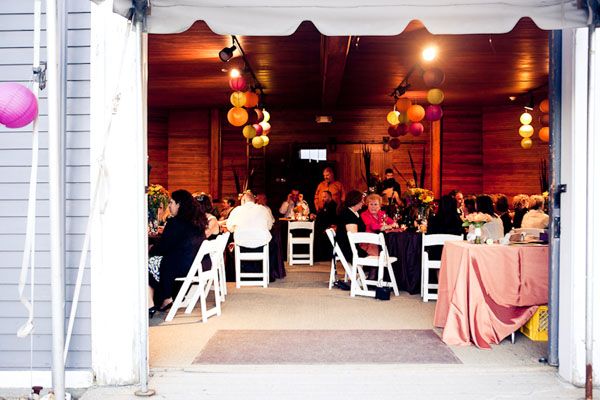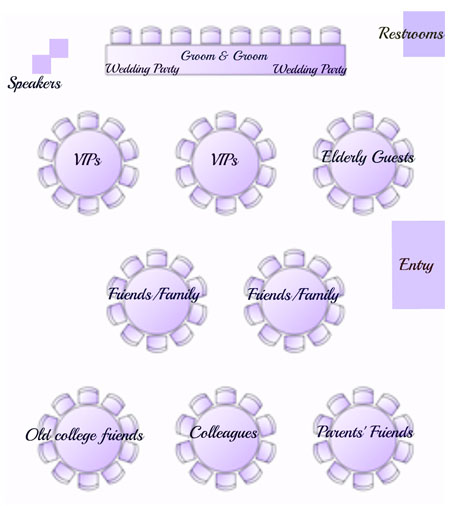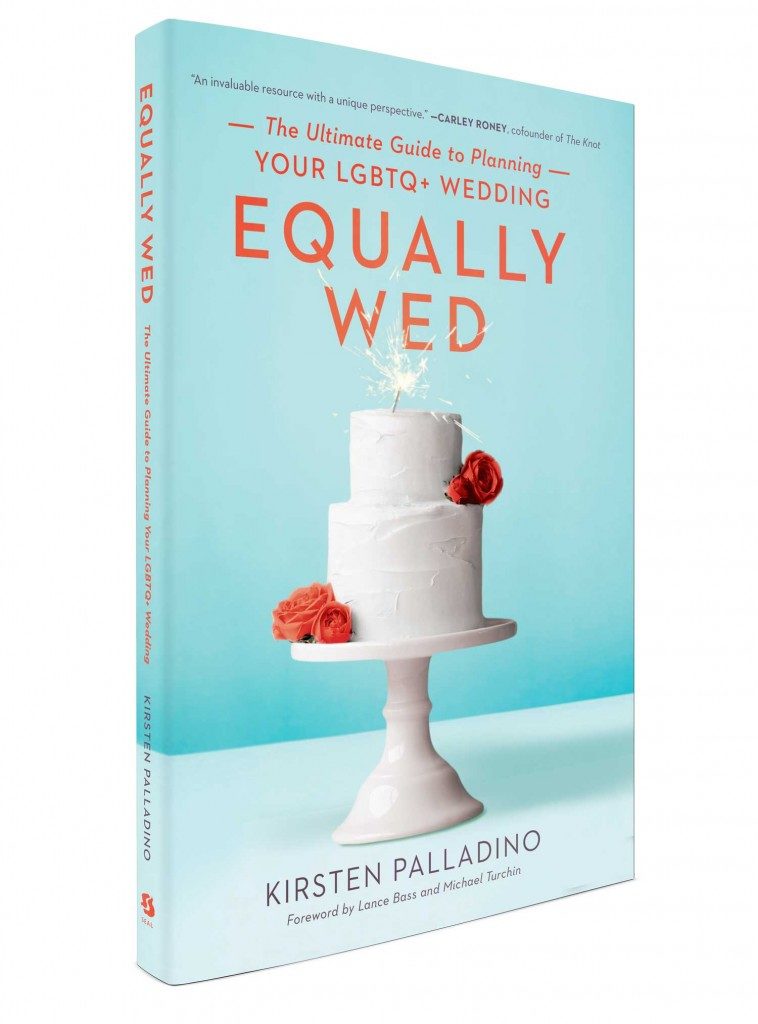Creating a Drama-Free Seating Chart
Seating friends and family at the reception is no easy task. Follow our suggestions to create a (hopefully) drama-free scene.
By Brittny Drye
Your favorite couple, who also happen to be your groomswomen, just broke up, your divorced parents haven’t spoken in three years and your fiance’s mother keeps adding to the guest list. Arranging your reception’s seating chart is perhaps the most daunting (and drama-filled) task in wedding planning, yet detailed designations can play a key role in your big day by averting drama-sparked fires, especially for weddings with a guest list exceeding 100.

Not only does it prevent guests from partaking in an unsolicited round of musical chairs, but it ensures that your seating is maximized since all places will be filled, and holes at tables due to clique bundles are not left open. “I highly recommend assigned seating whenever a formal meal (plated or buffet) is served,” says Melissa Phillips, event extraordinaire of Simply Perfect by Melissa. “It gives all guests a place of their own and it simply shows that you thought of them personally during the planning process.”
Armed with preparation, you can create a seating plan that will bring even the 10-year family feud to peace for an evening.
Organize Early
Start mapping out your chart for those you know will be in attendance—family, wedding participants’ dates, etc.—as you are making your guest list. As RSVPs begin to trickle in, place guests accordingly. “Working on a little at a time will save a lot of time versus waiting until the RSVP deadline and then feeling crunched since the escort cards will still need to be made and centerpiece counts finalized,” says Phillips. It’s also smart to reserve a few empty spots, in case of last-minute guests. Before the big day, double-check your list to ensure all guests are accounted for. “No one likes to show up to a wedding and not have seat assigned to them.”

Who Sits Where
Traditionally, the tables closest to the couple-of-honor are reserved for the VIPs—the parents, wedding participants or close friends. Migrating outward, reserve those spaces for those who you are less close to, who tend to be old school friends, colleagues, parents’ friends, etc.
While you want to encourage integration of cliques, weddings should not be treated like a mixer or networking event. “As fun as it may sound to mix up the guests, do not separate couples at tables or within the room,” says Phillips. Mix new faces amongst the familiar, and even the most outgoing guest can become a wallflower when faced with a table full of strangers.
Refrain from creating the dreaded singles table, as well as placing your newly single gal pal at a table of gushing newlyweds. Take each guest’s individual circumstances into consideration and plan accordingly. Have a guest flying solo who doesn’t know anyone? Sit them at a table with those he or she shares an interest with that can spark a conversation that will (hopefully) flow all evening.
Even if you opt out of doing a seating chart, you should keep elderly guests in mind and reserve special seating. “Not near speakers and keep them closer to the door for easy access to restrooms and the exit,” says Phillips. If there are several children in attendance, create a kids table, filled with fun activities to keep little wandering minds busy, with a trusted (and paid) preteen placed nearby to babysit. If your ring bearer or flower girl are the only mini attendees, seat them with their parents.
Head of the Table
Many newlyweds host a table at the reception, at which they sit with their nearest and dearest. “If you opt for a head table of some sort, prioritize making that table intimate,” says Phillips. “You have chosen those people to be part of your day and to sit with you for a reason. Create an intimate environment by situating yourselves so you can see each other,” even if that means having their backs toward the guests. “It’s not a bad thing!” assures Phillips, noting that they are there for the grooms or brides, not the other guests.

Size Matters
“Don’t overstuff a table,” Phillips warns. She explains that many vendors will assure you that a 60-inch round table can seat 10, while a 72-inch round table can seat 12. However, comfortably, they should seat eight and 10 persons, respectively. She also notes that a traditional banquet table is not wide enough to seat people on both sides. “Create a wider table or rent special rectangular tables meant for double-sided seating.”
Dealing with Drama
While in your newlywed bliss, you want to look out directly to those who whole-heartedly support your marriage, even if those priority guests do not include close relatives. “Those are the ones who will want to be actively part of your day,” says Phillips. If Mom is attending but not supportive of your spouse-of-choice, keep her busy with her own table (if budget and space allow). She’ll be too busy hosting her entourage of friends to question the seating arrangement (and hopefully your marriage).
“Do keep in mind the dynamics of the people seated at the table and really try hard to not sit people near each other who may not be a good match,” says Phillips. It is rare that a guest will speak up at an event about not liking his or her seat. If they do, they usually say something to a room captain or wait staff and they will do their best to accommodate them. “Don’t take it personally if someone seems unhappy with their seat. There are only so many places to seat people and, really, they are only in that seat for about an hour and a half.”
Photos: Rob Greer for Real Wedding Sebastian and Fritz; Kristin Korpos Photography for Real Wedding Kevin and Pete
MOST VIEWED STORIES
- Your 2026 Wedding Planning Playbook: Decoded from the Year’s Trending Google Searches
- Supreme Court Declines to Hear Marriage Equality Case
- From Swipe to Soulmates: How Daniel & Michael Found Love After a Life-Changing Spinal Cord Injury
- Brighten Your Smile: 5 Teeth Whitening Options for Your Engagement Photos and Wedding Day
- Romantic Outdoor Rome Wedding with Lilac Florals and a Lego Ritual























